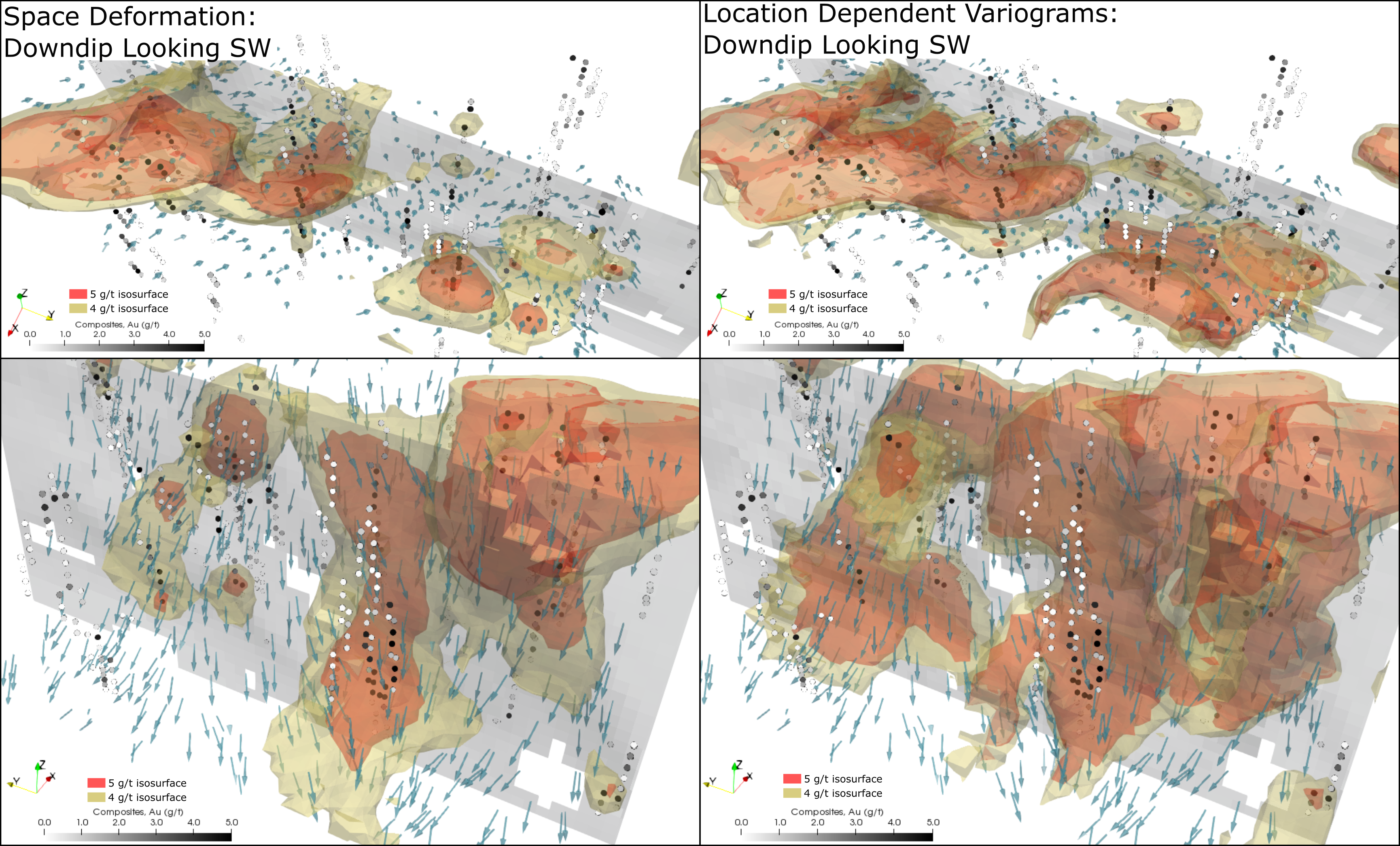
Abstract
Incorporating locally varying anisotropy (LVA) in geostatistical modeling improves estimates for structurally complex domains where a single set of anisotropic parameters modeled globally do not account for all geological features. In this work, the properties of two LVA-geostatistical modeling frameworks are explored through application to a complexly folded gold deposit in Ghana. The inference of necessary parameters is a significant requirement of geostatistical modeling with LVA; this work focuses on the case where LVA orientations, derived from expert geological interpretation, are used to improve the grade estimates. The different methodologies for inferring the required parameters in this context are explored. The results of considering different estimation frameworks and alternate methods of parameterization are evaluated with a cross validation study, as well as visual inspection of grade continuity along select cross sections. Results show that stationary methodologies are outperformed by all LVA techniques, even when the LVA framework has minimal guidance on parameterization. Findings also show that additional improvements are gained by considering parameter inference where the LVA orientations and point data are used to infer the local range of anisotropy. Considering LVA for geostatistical modeling of the deposit considered in this work results in better reproduction of curvilinear geological features.